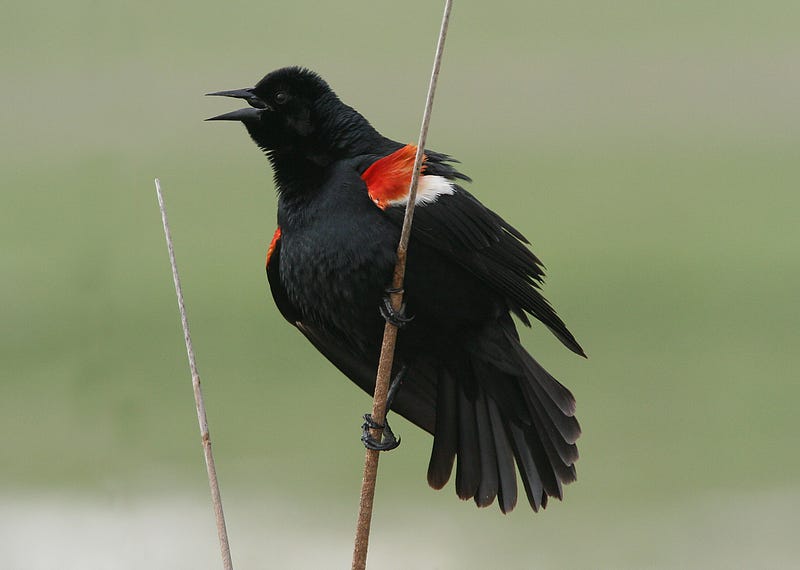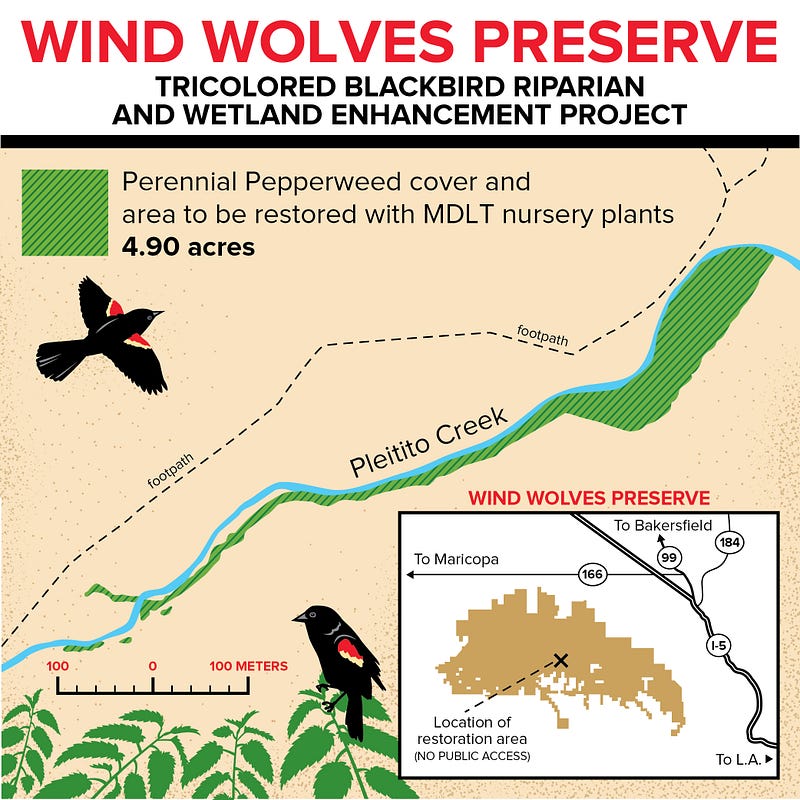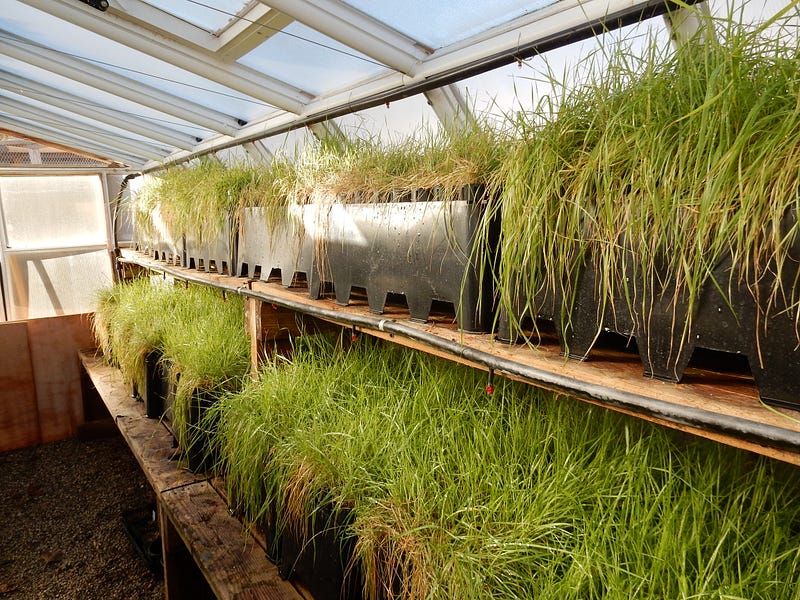The Plants Saving Blackbirds at Wind Wolves Preserve
The tricolored blackbird population has steeply declined in recent decades. Stinging nettles grown by the Mojave Desert Land Trust could help turn that around.
One of the goals of our nursery is to restore habitats throughout the region by growing native plants. In the summer of 2017, the Mojave Desert Land Trust (MDLT) was contracted to grow plants for a restoration project at Pleitito Creek in Wind Wolves Preserve. That’s right — a riparian habitat, not our usual desert fare!
Well, Wind Wolves Preserve is still a part of the desert — in fact, it marks where the western Mojave converges with the Transverse Ranges, Coast Ranges, Sierra Nevada, and San Joaquin Valley. What’s more, Wind Wolves is the west coast’s largest non-profit preserve, clocking in at about 93,000 acres.
We were excited to work with such a special place — and even more excited when we learned what the project entailed.

Tricolored blackbird. Photo by Flickr user Alan Schmierer.
The project aims to eradicate invasive perennial pepperweed from upper Pleitito Creek and replace it with native plant species, particularly stinging nettle. Doing so will expand the habitat and plants available for creating nests used by tricolored blackbirds, a beautiful bird popular among birdwatchers and ecologists alike.
The tricolored blackbird population has steeply declined in recent decades, likely due to loss of habitat in the face of threats like invasive species and climate change. The birds are highly social, and their propensity for nesting in dense colonies makes them vulnerable when habitats are scarce. The species is not yet endangered, but it is of conservation concern under review for endangered status.
One of the best spots for tricolored blackbirds in Wind Wolves Preserve is Pleitito Creek, which runs along the east side of San Emigdio Canyon with Bitter Creek National Wildlife Refuge to the west and Los Padres National Forest to the south. But the intrusion of perennial pepperweed into the Pleitito Creek drainage has degraded the existing natural habitat and pushed out the native stinging nettle, the birds’ favorite plants for nesting. The tricolored blackbirds literally flock to the stinging nettle — an estimated 1,200 birds occupied a portion of the creek covered in native stinging nettle after fledglings emerged in the Spring of 2016!

Wind Wolves Preserve wanted to give the tricolored blackbirds more opportunities to thrive — and MDLT was there to help.
“That I know of, there aren’t any nurseries local to Wind Wolves Preserve that would agree to grow plants for us at the scale that MDLT did,” commented Daisy Carillo, preserve ranger at Wind Wolves Preserve.
The MDLT-grown plants are now at the Wind Wolves Preserve, and the restoration will take place over the course of the next few years.

MDLT plants at the Wind Wolves Preserve nursery. Photo by Daisy Carrillo.
We are glad that our plants can help restore habitats across California, and we can’t wait to see what these plants can accomplish!
